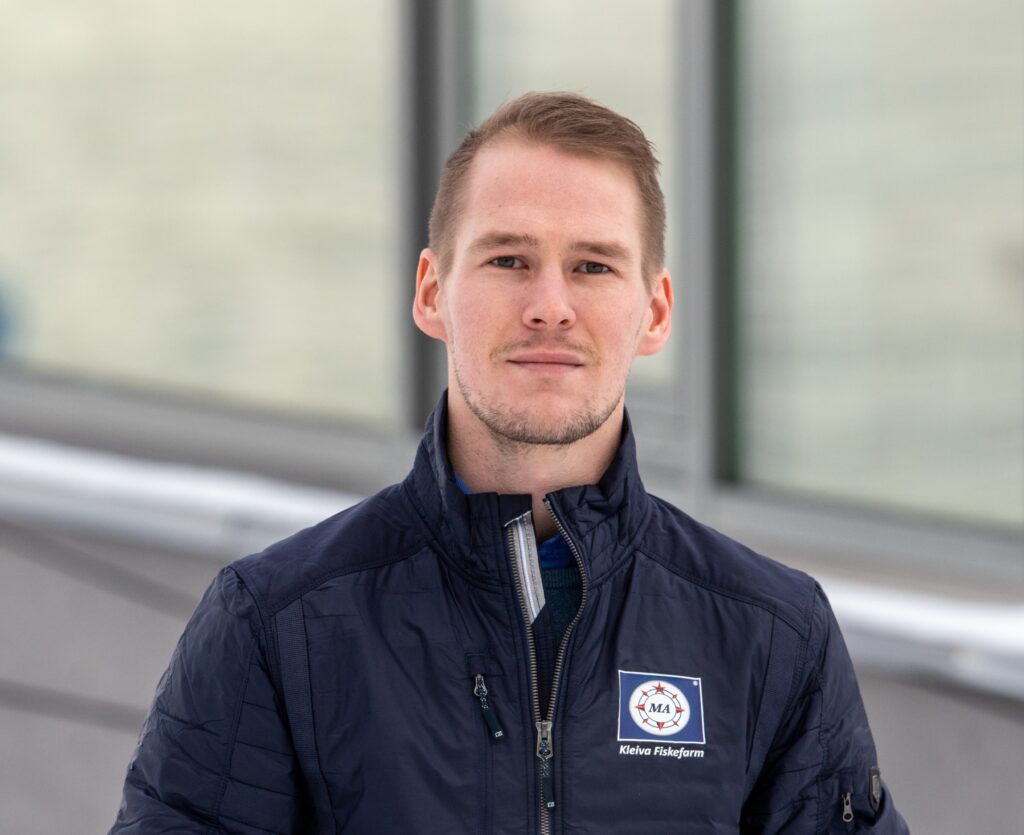Solid solution

Øymerd’s floating islands should be tough enough to face the roughest seas. It is the latest in a growing line of futuristic offshore salmon projects that look more like space stations than fish farms.
After a long stand-off with the authorities, Astafjord Ocean Salmon AS has been granted four development permits allowing it to proceed with its much heralded “Øymerd” concept – a fish farm made of concrete and designed to cope with rough seas and winter ice.
Astafjord Ocean Salmon is owned by two family salmon businesses, Kleiva Fiskefarm and Gratanglaks, who are prepared to spend the not insignificant sum of NOK 700m (£60m) to achieve their ambition.
But their tussle with bureaucracy is still not over. Astafjord was granted only half the number of permits it asked for and has decided to appeal, arguing it needs far more capacity to test the plant properly.
The four permits are for a total of 3,120 tonnes, but the company says it will require at least twice that figure.
Astafjord’s application for permits was initially rejected by the Directorate of Fisheries for the somewhat strange reason that it did not meet the requirement for “significant innovation”.
The company mounted an appeal which was subsequently rejected by the Directorate, but that decision was overturned by the Ministry of Trade and Industry. Fisheries Minister Odd Emil Ingebrigsten has welcomed the change and says he looks forward to seeing the project reach fruition.
The dispute over the number of permits remains and it could mean further delay unless the issue is resolved quickly. The increased pace of coastal fish farming in Norway means that its fjords are becoming congested, so companies are looking for innovative solutions. Some believe projects like Øymerd are the future for offshore fish farming.
Øymerd is essentially a small floating island, built mainly of concrete, which stands around 10 metres high. The plan is that it will be stationed off the north Norwegian coast near Harstad. Three-quarters of the platform (7.5 metres) will be underwater and it is designed to withstand some of the roughest seas the Troms coastal region can throw up. The precise location has still to be decided.
The platform has three large specially designed net bags, radiating out in spoke fashion to hold the fish. Operations are controlled by a three-storey high tower-like building in the centre of the platform, with storage space under the deck for holding technical equipment and feed silos. Øymerd will be equipped with an energy system that prevents ice formation on the deck and along the freeboard. There is also a helipad.
Tore Lundbergs, CEO of Gratanglaks, said: “We are sure that there is the greatest growth potential for the aquaculture industry from Troms and northwards. But if we are going to exposed locations, we must also take into account ice problems, first and foremost ice formation from sea spray.
“Øymerd can also become a solution for a more extreme climate, such as areas that risk drift ice. Since the concrete structure is deep in the water, Øymerd will not move significantly on the waves.”
Marius Arvesen the general manager of Astafjord Ocean Salmon and a member of the family behind Kleiva Fiskefarm, says “Our aquatic technicians can work under safe, stable conditions at the same time as the fish are shielded from waves and surface current…. this also prevents lice infestation.”
He says the people at Kleiva have always had a strong focus on the environment and sustainability, with the company constantly working on new development opportunities.
Normally there will be four staff on duty at any one time, but Øymerd is capable of accommodating nine people.
Arvesen says he has great faith in the project, but points out that while the concept represents a new method of raising salmon, the technology is not that unusual as some of it is already in use by the offshore energy industry.
Everyone seems proud that Øymerd is an all-Norwegian project – for example, the concrete pontoons are being constructed by Kvaerner Concrete Solutions AS, based in Lysaker, near Oslo. The two investing companies believe it will provide many construction, supply and engineering jobs as well as helping to solve a number of challenges such as sea lice.
Arvesen added: “We see no reason to build it outside Norway. In this way, we are sure that we will get a quality product.”
Astafjord Ocean Salmon has worked closely with the suppliers Bemlotek and Kvaerner over the past couple of years. Kvaerner will build the structure at a suitable location in Norway before it is towed north to Harstad for equipment and shore testing
A large part of the design work in the last two years has been carried out by Concrete Structures.
“In this construction, we utilise the robust Norwegian concrete technology that has previously been used in the North Sea and in several international projects,” says project manager Kåre Hæreid.
“The concrete used here will be a solution specially adapted to Arctic conditions,” adds co-founder Rolf Valum.
Tore Lundberg summed it up saying: “This project is the best of both worlds. We have benefited greatly from the working methods from the oil industry, in addition to the deep expertise in concrete and floating platforms for rough seas. At the same time, our long experience from both fishing and aquaculture has probably been very important for the final solution.”

Marius Arvesen

